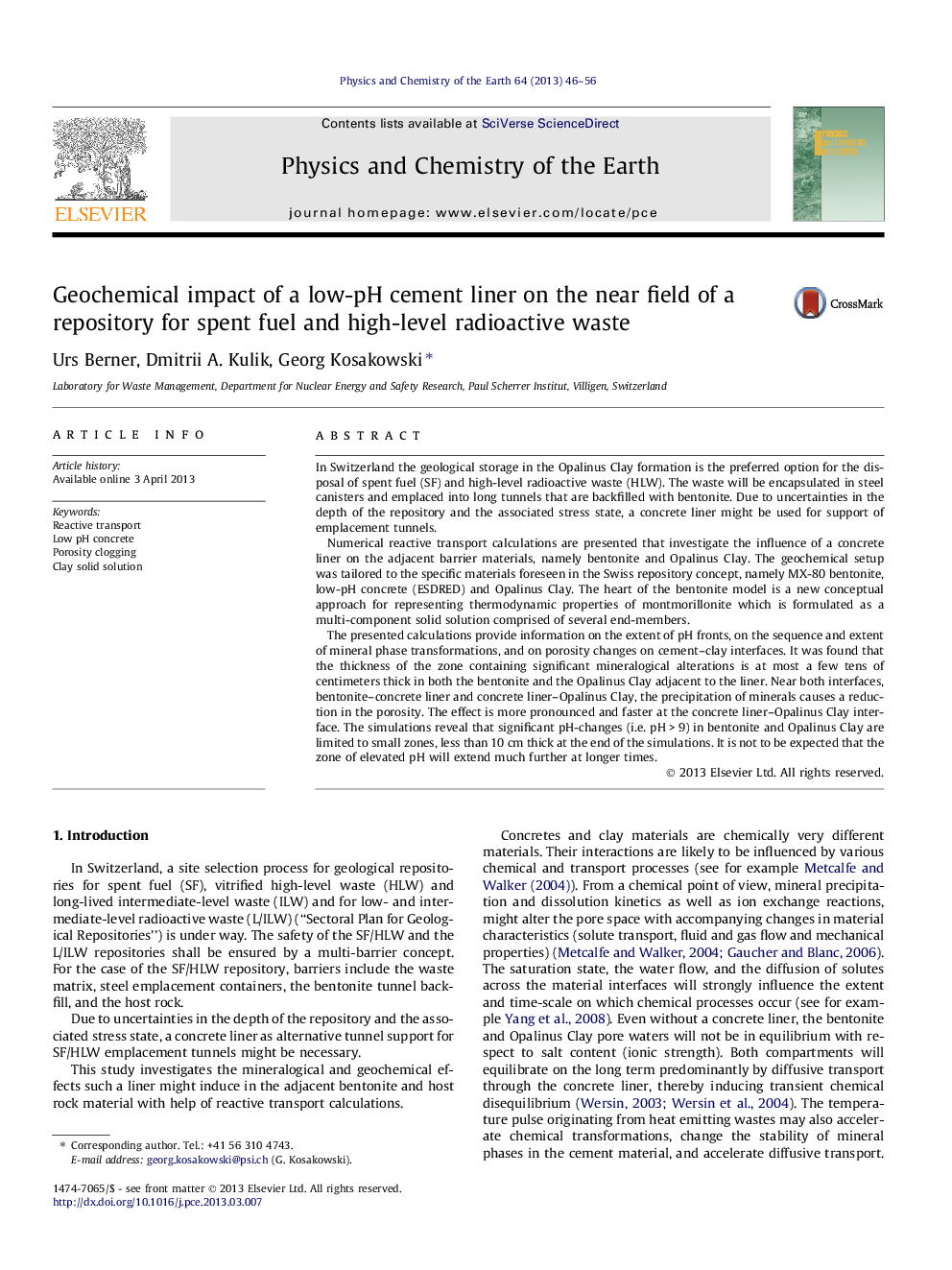| Article ID | Journal | Published Year | Pages | File Type |
|---|---|---|---|---|
| 6442028 | Physics and Chemistry of the Earth, Parts A/B/C | 2013 | 11 Pages |
Abstract
The presented calculations provide information on the extent of pH fronts, on the sequence and extent of mineral phase transformations, and on porosity changes on cement-clay interfaces. It was found that the thickness of the zone containing significant mineralogical alterations is at most a few tens of centimeters thick in both the bentonite and the Opalinus Clay adjacent to the liner. Near both interfaces, bentonite-concrete liner and concrete liner-Opalinus Clay, the precipitation of minerals causes a reduction in the porosity. The effect is more pronounced and faster at the concrete liner-Opalinus Clay interface. The simulations reveal that significant pH-changes (i.e. pHÂ >Â 9) in bentonite and Opalinus Clay are limited to small zones, less than 10Â cm thick at the end of the simulations. It is not to be expected that the zone of elevated pH will extend much further at longer times.
Keywords
Related Topics
Physical Sciences and Engineering
Earth and Planetary Sciences
Geochemistry and Petrology
Authors
Urs Berner, Dmitrii A. Kulik, Georg Kosakowski,
